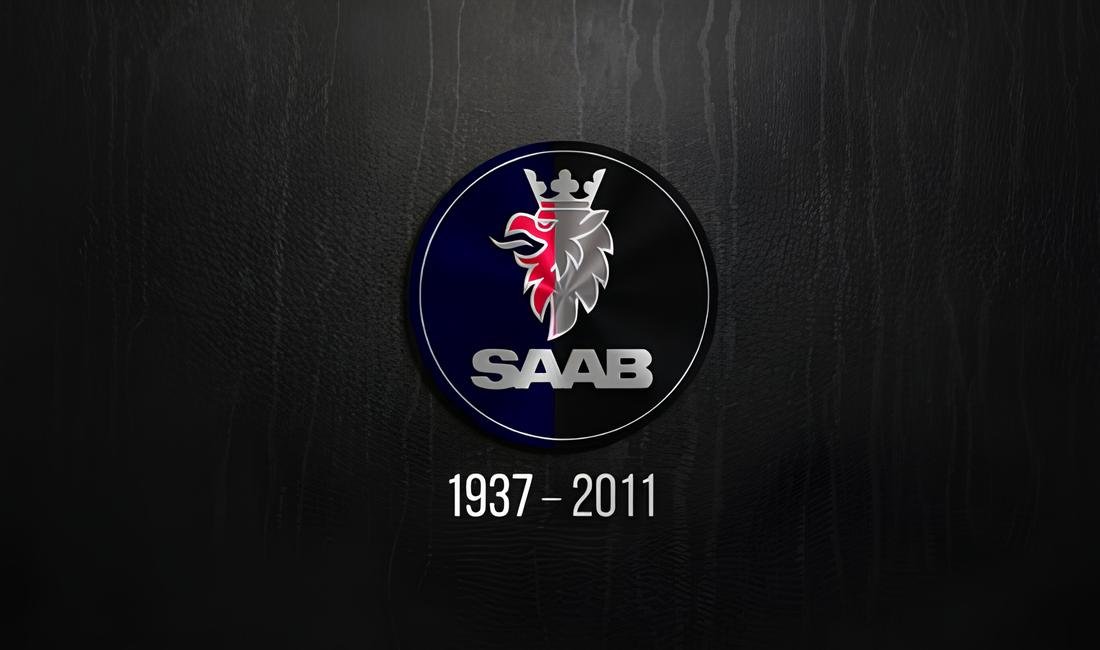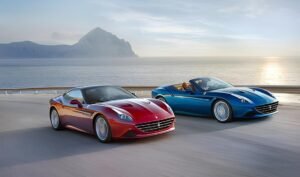Remember a fun-to-drive car brand that was the first to use turbocharged technology? The brand created some of the finest cars in history, engineered to their excellent handling, impressive power, and fuel efficiency.
Yes, you guessed it right, we are talking about SAAB automobiles. A Swedish company with a special place in the hearts of gearheads who are still eager to know what happened to the brand and why it stopped making cars.
This article will walk you through the captivating journey of SAAB, how an aviation brand that started under threat to save its country- commenced making automobiles, went through multiple transitions during its lifetime, and took its last breath on December 19, 2011.
A company with the most transitions and a bewitching history is worth spending time on. Lastly, we will try to explore if it is ever coming back- a crispy read for classic SAAB lovers.
Who owns SAAB, and When Did it Start Making Cars?
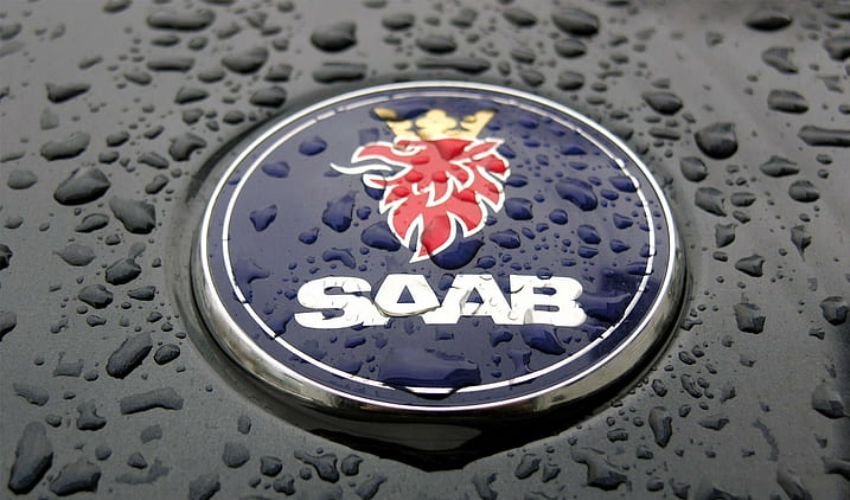
Primarily by the Wallenberg family (via Investor AB) and publicly traded on Nasdaq Stockholm, Svenska Aeroplan Aktiebolaget (SAAB) with a unique history was founded in 1937 with a prime focus on airplanes, missiles, electronics, and computer production.
The birth of the SAAB brand was with Swedish Prime Minister- Per-Albin Hansson, giving one of his speeches during the Cold War season stated:
“Our country should manufacture its weapons as much as possible. We have good shipyards and armories, but we have no production in the country for warplanes”.
The company then started making Saab automobiles, Scania diesel engines, Scania trucks, and buses after World War II in 1940. Saab 92 was the first-ever automobile that went into mass production under the parent company in 1945.
The brand changed hands multiple times: merged with truckmaker Scania-Vabis (1969–1990), acquired by General Motors (2000–2010), sold to Spyker Cars (2010–2011), and finally purchased by National Electric Vehicle Sweden (NEVS) in 2012, which revived limited production under the NEVS name but lost rights to the Saab badge in 2014.
Today, Saab AB thrives in defense innovation (e.g., Gripen jets), while NEVS focuses on electric vehicles, leaving the Saab car brand a relic of automotive history.
Also Read: Best Vintage Ferraris
Saab 92: The First Saab Ever Made
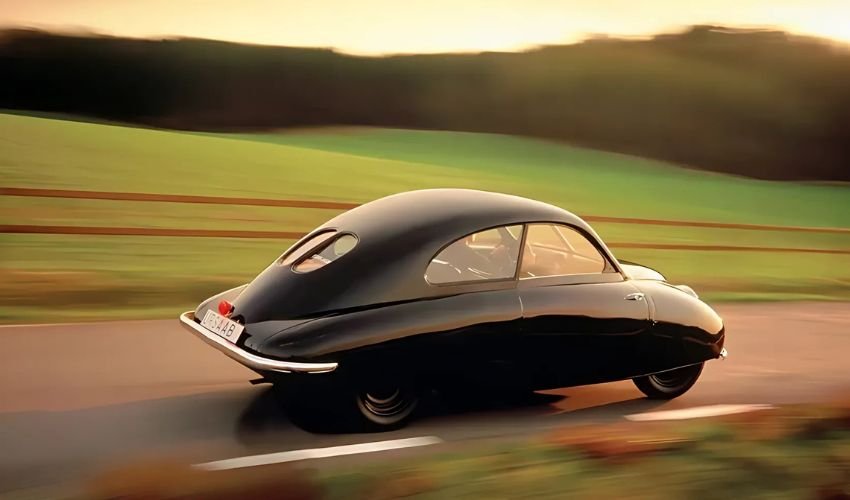
December 1949, Saab 92 marked the birth of Saab’s automotive legacy as the brand’s first production car, transitioning from aircraft manufacturing to automobiles.
Designed with aviation-inspired aerodynamics, its sleek, single-piece stamped steel body boasted a drag coefficient of 0.30—revolutionary for the era—and was famously painted “bottle green” using surplus wartime aircraft paint.
Saab 92 was powered by a compact 764cc two-stroke engine generating 25 horsepower, this lightweight (805 kg) front-wheel-drive marvel could reach 105 km/h (65 mph), blending efficiency with surprising agility.
Early models of 92 were rare, with only 700 units produced in 1950, but quickly gained fame through rally triumphs, including a class podium at the Swedish Rally just weeks after launch and Greta Molander’s 1952 Monte Carlo “Coupe des Dames” win in a tuned 35hp version.
By 1957, over 20,000 units had rolled out, paving the way for Saab’s iconic 93 and 96 models. A symbol of post-war innovation, the Saab 92 remains a cherished classic, celebrated for its quirky design, rally pedigree, and role in launching one of Sweden’s most storied automotive brands.
Was SAAB Successful?
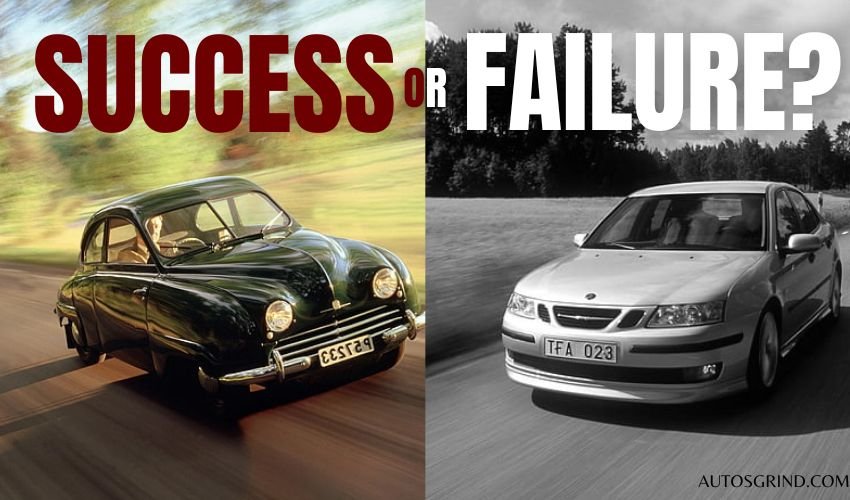
Can you think of a car brand that offers special designs, durable cars, and advanced engineering to buyers and still goes unnoticed?
This was the case with Saab. Saab lived its success from the start in 1949 with the launch of SAAB 92- which dug deep into aerodynamic designs. Saab enthusiasts started loving the brand due to its aerodynamic features, innovative engineering, and unique designs.
The original Saab 900 brought the brand into the mainstream. The bars were high for the brand after heated seat integration and mass production of turbocharged engines in 1978.
At this point, the brand built a reputation for producing unique-looking reliable cars for car lovers, as well as dominating rally racing in the 1960s and 1970s.
The night panel, a fighter jet inspired by the parent company- was integrated into cars where all lights turned off with a single touch to aid night vision in 1993. The Saab cinematic roles are not hidden and can be considered the best moment for the company with Paul Giamatti’s 900 convertibles in 2004.
With unique designs, a solid driving feel, advanced engineering, and a passionate community of enthusiasts, the SAAB automobile was a success surely a success while it lasted, just not enough! Like the Motor1 says:
“Saab Was Great, You Just Didn’t Get It”
Legendary SAAB Cars
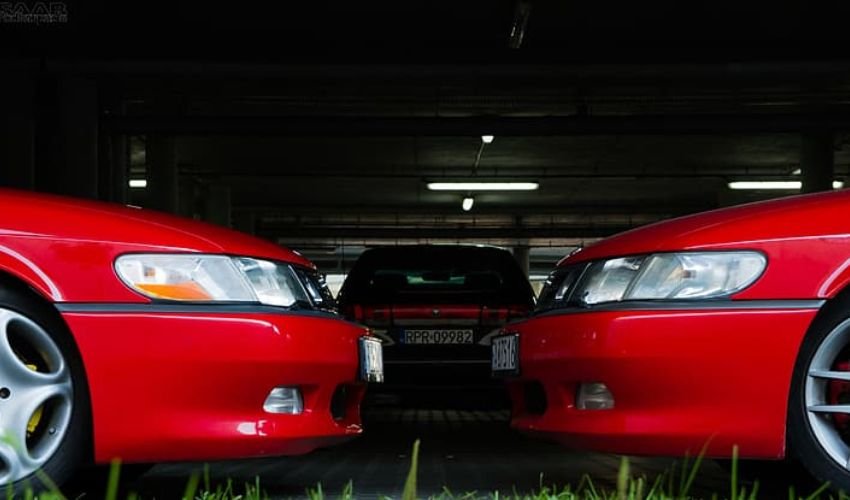
1. SAAB 9-3 Viggen
The 9-3 Viggen is often regarded as the last great true SAAB ever made. It’s still the most powerful car made by the brand. Viggen means thunderbolt and refers to the Saab 37 Viggen fighter jet. A successor to the iconic 900 Turbo that was launched to give rivalry to the big brands like Mercedes Benz or BMW- 9-3 Viggen.
A fighter jet-inspired front drive, night panel, torque steering monster, and a fun-to-drive, 9-3 Viggen was available in a three or five-door hardtop or two-door convertible. The car boasted a turbocharged produced 230 horsepower and 252 lb-ft of torque.
2. SAAB 99
Being known as a reliable winter car- Saab 99 achieved a milestone in the automotive industry with its excellent handling and front-wheel drive system. Before it, Saab was known for its 96 models.
This two-door sedan was the first production model with a turbocharger. It went into production in 1969. Saab 99 gave a break to the company with an overall 600,000 units production and 73,000 units sale in 1976 alone.
It was a premium car with a robust heater, premium handling, and a higher price tag. Another key feature in this sedan was the hockey-puck C-pillar’, a design cue that would lend itself to future models.
In a nutshell, Saab 99 was the model that gave this small car brand a face and sell between 1968 and 1984.
3. SAAB Sonett III
A 1972 model with a 1.5-litre V4 engine and 65bhp horsepower, the Saab Sonett III is a true sports car made by the brand to compete with the American sports car market.
Sonett III comes with a sleek design, lightweight construction, a powerful engine, and manual transmission integration. With a 0-62mph sprint time of around 13 seconds, this sports car offers 103mph maximum speed.
Why Did SAAB Go Out of Business?
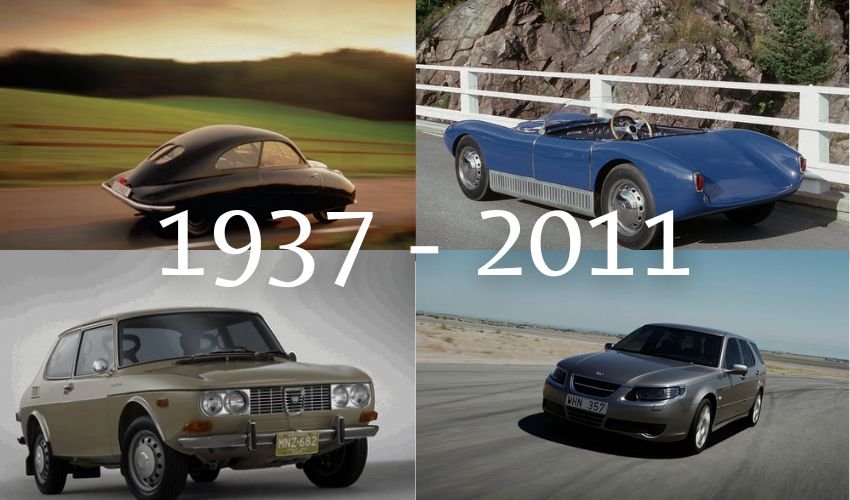
The two-decade ownership by General Motors can be seen as a reason for the SAAB failure. However, it’s just the surface-level interpretation. To find the other underlying reasons for Saab’s failure as an automobile brand, let’s start from the start.
The parent company SAAB has built its reputation in the global market with multiple aerospace equipment like Saab 32 Lansen aircraft which served the country for 41 years straight.
Soon, AB’s reputation started dimming, with the automobile section getting the limelight which affected AB’s growth. The parent company separated them and both started working independently as Saab AB and Saab Automobile.
At this time, GM purchased most of the automobile company’s shares, and the American Automobile industry launched most of the iconic models. This was the time for the brand reconstruction and the company had already sold a higher number of 99 units which could help them to stand on their feet but things didn’t go as planned.
The mismanagement in GM administration also limited the brand to just a few models which negatively hit the Saab’s reputation.
Another reason for the SAAB decline is the GM’s veto right which didn’t let the brand win a losing battle and was always a barrier in its survival efforts. After GM’s departure and multiple ownerships, the company couldn’t withstand the hard times.
Neither the 400 million Euro loan from the European Investment Bank in January 2010 nor the survival tactics from the authority could help it and became declared bankrupt.
Which was the Last SAAB Ever Made?
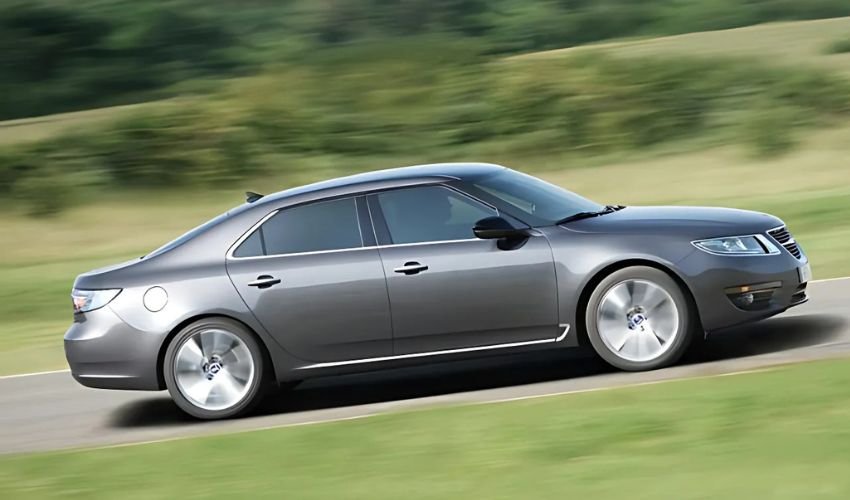
The first question with the utmost interest by the SAAB enthusiasts is always, which was the last SAAB ever made? A SAAB lover can never forget to ask this and it’s good to have the answer as it is not only informational but interesting to learn about the last SAAB and where it is now.
So, the last SAAB that left the factory at Stallbacka industrial area in Trollhättan was a 9-3 Aero Saloon. Yes, you read it right, it was a SAAB 9-3 Viggen manufactured by NEVs in Sweden factory between 2013 and 2014. The best thing about the last SAAB is in mint condition with only 70 kilometers on its odometer at the time of auction.
That last SAAB had a full leather interior and a 2.0-liter four-cylinder engine that produces 220 horsepower and sends the power to the front wheels via a six-speed automatic gearbox.
It was then auctioned and the winner of the last SAAB was Claus Spanggaard who bought the masterpiece in exchange for $48,200. The money was later used for charitable causes and to make the Saab owner happy.
Is SAAB Ever Coming Back?
Even after the SAAB car company ended in Trollhättan in 2011, the topic is open to classic car lovers. Questions like Does SAAB still make cars and Is SAAB ever coming back? are still asked by the people or interviewers in the interviews of Saab AB.
However, the one-word answer to this question is NO. Saab automobile is not coming back- is confirmed by Rådström in an interview with the Polish Businessinsider magazine as he said no to the answer without spreading speculations.
Multiple reasons back this answer…
One of them is the SAAB AB growth in recent times. This aerospace company is doing great in its field and getting recognition globally without any interest in car making again.
The second and the most apparent reason is the hibernation of NEVS- the company that once tried to revive SAAB’s automobile itself went into hibernation and laid off almost 340 employees.
Lastly, the changing car market trends toward EVs are one reason. The automobile world’s shift toward electric cars will not let classical cars re-enter the market and flourish. It’s time for EVs to take over.
If there is still hope for the recovery of Saab automobile, it could be a big investment. And there is no such investor comes to light that can bring this company back to life.
Final Words
Everyone remembers a tragic death, and this is what happens to Saab Saab’s sad story may have ended for a while now but it’s still fresh in the memories of the SAAB enthusiast and it will remain alive till the last SAAB can be seen on the road.
Survival of the fittest is a universal law, and not accepting this fact is one of the reasons for the company’s decline. SAAB restricted itself to limited models and didn’t experiment with new trends.
Whatever the reason, there is no SAAB automobile now, and a company with the potential to take over the global car market is just in the minds of gearheads seeking a light of hope and questioning does SAAB still make cars?
Frequently Asked Questions
- What was the last car made by Saab?
Saab's last cars were the 9-3 and 9-5, which they built at their factory in Trollhättan, Sweden. The 9-7X was different - GM made this car until 2008, alongside similar vehicles like the Chevrolet Trailblazer. There was one car that didn't follow Saab's usual naming pattern: the Saab-Lancia 600, which was actually just a Lancia Delta with Saab badges on it.
- Is Scania the same as Saab?
Not exactly, but they have a shared history. Saab and Scania merged in 1968, forming Saab-Scania. However, in 1989, the automotive division was spun off and became Saab Automobile AB, operating as a separate company. Scania focuses on commercial vehicles like trucks and buses, while Saab was known for its passenger cars.
- Who owns Saab right now?
The rights to the Saab name are complex. After Saab Automobile declared bankruptcy, its assets were acquired by National Electric Vehicle Sweden (NEVS) in 2012. However, NEVS lost the right to use the Saab name for automotive production in 2014. As of now, no company is actively producing cars under the Saab brand.
- Are Saabs still popular?
While you don't see them on the road as often as you used to, Saabs still maintains a legendary status among car enthusiasts. Their unique design, quirky features, and focus on safety and engineering still appeal to many. Some models, especially the 9-5, are becoming sought-after collectibles.
- Why did Saab fail?
The two-decade ownership by General Motors can be seen as a reason for the SAAB failure. Saab didn't want to make different types of cars, like compact models and small SUVs, which could have made them more money. Saab kept making the same kinds of cars repeatedly, hoping things would improve, but things didn't go as planned and this ultimately led to Saab failing in the long run.
- Is Saab discontinued?
Yes, Saab is discontinued. Saab Automobile filed for bankruptcy in 2011, and production of Saab-branded vehicles has ceased. While NEVS attempted to revive the brand with electric vehicles, they ultimately lost the rights to the Saab name.

